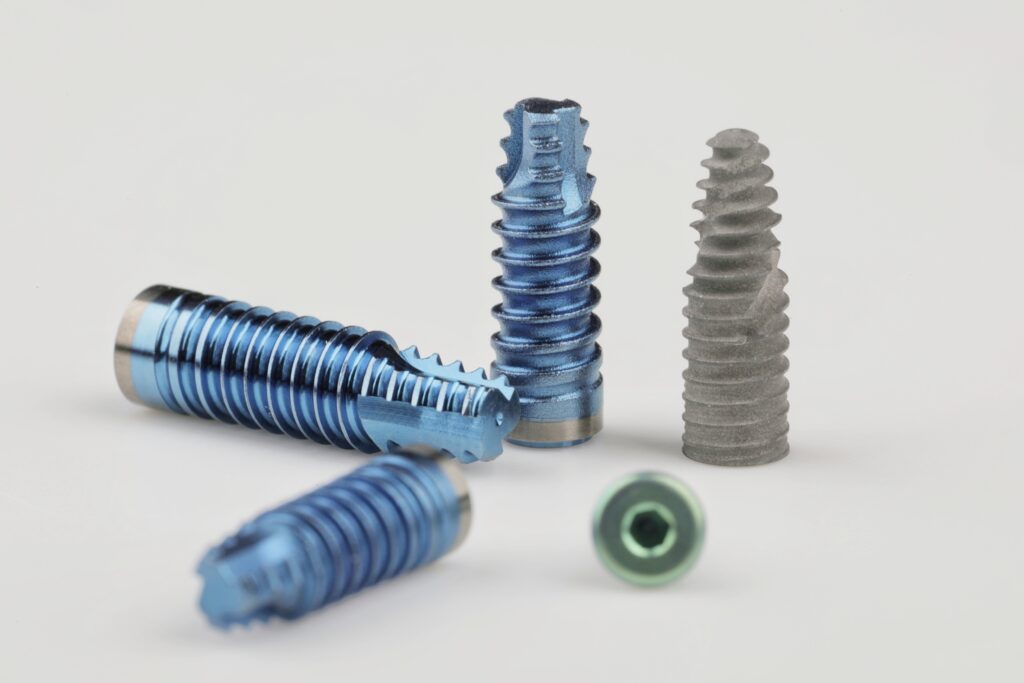15.05.2023
Dental implants represent an artificial tooth root that is surgically implanted in the jaw when it is no longer possible to save the tooth and it carries a prosthetic crown or bridge. Implants are made of two types of materials, titanium and ceramic.
Implants made of titanium have been on the market since the mid-1960s and their successful application has been proven. Titanium is a biocompatible, very durable and stable material with high resistance to corrosion with a significantly higher percentage of success compared to zirconium implants. The latter consists of two parts – the implant itself, which is installed in the jaw, and the superstructure, which can be flat or angled, which can correct the position of the implant in the jaw. Although rare, there is a certain failure rate with titanium implants in people with metal allergies. Also, in people with a thin gingival biotype, slight screening through the gingiva is possible because they are dark in color, especially in the aesthetic zone. With careful maintenance, good oral hygiene and not smoking, titanium implants have a 95% success rate.

Ceramic implants are obtained from zirconium oxide and are also called zirconium implants. Zirconium implants are metal-free implants, biocompatible, hypoallergenic, good resistance to corrosion and bacterial accumulation, but slightly less resistant to fractures than titanium implants. Due to their white color, they are an excellent choice for patients with a thin gingival biotype, especially in the aesthetic zone. In addition to the mentioned advantages of zirconium implants, there are also some disadvantages such as the structure of the implant itself, where the implant itself and the superstructure on which the dental crown is installed are connected into one unit, and the installation of the implant itself and the direction must be extremely precise. Also, the process of making zirconium implants is complex and their price is slightly higher than titanium implants, and the success rate is slightly lower.
The choice of implant is individual and it is necessary to keep in mind the specific characteristics of each patient – bone quality, gingival biotype, position of the implant in the jaw and type of prosthetic work, and make a decision accordingly.